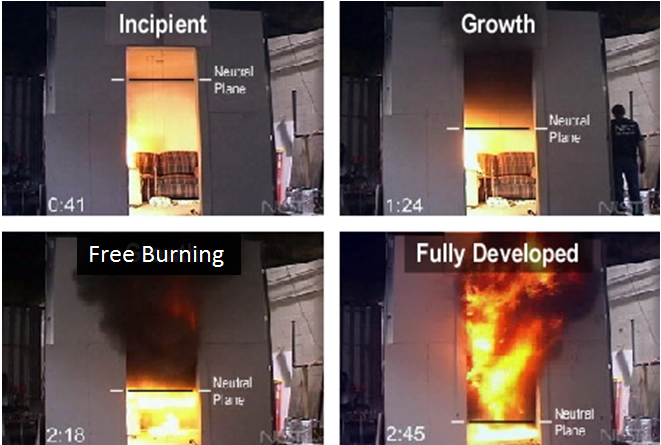Breathing Fire. Dont temp it.
By most standards including the Australian Fire Authorities Council (AFAC) there are 4 stages of a fire. These stages are incipient, free burning, fully developed, and smouldering. The following is a brief overview of each stage.
Incipient - This is also known as “ignition” and is usually represented by a very small fire before the following stages. During this phase, the products of combustion may be minimal, the changes in the surrounding atmosphere may be difficult to observe (only some smoke, no detectable flame), and the amount of heat generated will not significantly affect the surrounding area. The incipient phase can last a few moments (i.e., ignition of a combustible liquid), hours, or even days (i.e., the exothermic reaction seen in spontaneous combustion).
Free burning – The growth stage is where the structures fire load and oxygen are used as fuel for the fire. There are numerous factors affecting the growth stage including where the fire started, what combustibles are near it, ceiling height and the potential for “thermal layering”. It is during this shortest of the 4 stages when a deadly “flashover” can occur; potentially trapping, injuring or killing anyone still in the affected room/space.
Fully developed – When the growth stage has reached its max and all combustible materials have been ignited, a fire is considered fully developed. This is the hottest phase of a fire and the most dangerous for anybody trapped within.
Decay (Smouldering) – Usually the longest stage of a fire, the decay stage is characterised by a significant reduction in oxygen or fuel, putting an end to the free burning phase. Two common dangers during this stage are first – the existence of non-flaming combustibles, which can potentially start a new fire if not fully extinguished. Second, there is the danger of a backdraft when oxygen is reintroduced to a volatile, confined space.
In the pictures of a fire test what is most important for non fire-fighters to understand is the Neutral Plane, indicated in each picture as a white line. This is the level at which clean, cool air still exists. Above this line the air is super heated and full of toxins. Unlike as depicted in most Hollywood movies and TV shows, this air is not survivable for long even with a handkerchief over your mouth.
The white line denote the divide between breathable, survivable air and ....... well not so breathable air.


